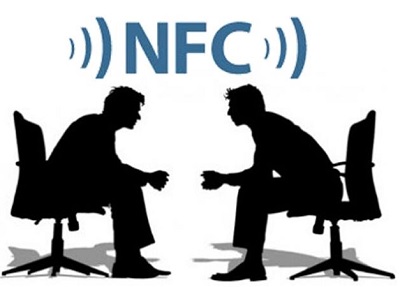These ads will be able to follow a viewer from one device to the next.
As Facebook continues to work on broadening its social media mobile advertising possibilities, the company has started to view the new sequential ad method as a technique with a great deal of potential for boosting the ability to control branding message among consumers using the network.
Sequential video ads give marketers the ability to send targeted video ads in front of a device user when a device is clicked.
Based on what is specifically clicked by the smartphone user, and what the mobile advertising message happens to be, marketers become able to follow up on previous selections with similar video ads as the user moves from one device (such as a smartphone) to another (such as a laptop or a tablet). By being able to create a sequence of various ads targeted specifically to the user, a more complete sales pitch can be formed from one video in the sequence to the next.
This series can work its way to a final mobile advertising “sell” video that is meant to encourage an actual purchase.
 When it comes to mobile marketing, video is playing a very important role that many believe will only become larger – much larger. As unique profile IDs can be generated, it provides marketers with an improved ability to sequentially target its content for the various device users as they use their social media accounts. This way, each following video in the sequence can build on the ones before it, offering considerably more control over the way that the message is ultimately delivered.
When it comes to mobile marketing, video is playing a very important role that many believe will only become larger – much larger. As unique profile IDs can be generated, it provides marketers with an improved ability to sequentially target its content for the various device users as they use their social media accounts. This way, each following video in the sequence can build on the ones before it, offering considerably more control over the way that the message is ultimately delivered.
This will also give Facebook the opportunity to provide advertisers with a higher level of control in the way that their product messages are deployed. The social network is bringing together a number of different elements from its own analytics as well as those of partners in order to improve their overall ad targeting capabilities.
Facebook is capable of obtaining massive amounts of user data that is helpful to mobile advertising, based on the info held within the accounts of the various user profiles, in addition to their actual activity.
Thinfilm and Evrythng have now come together for companies to be able to use this tech.
Thinfilm and Evrythng have now announced that they have enter into an agreement that will make it simpler for companies to be able to use the NFC technology sensor and barcode labels on their products so that they will be able to achieve better data flow management from the labeled items.
This involves the use of Thinfilm’s labels in combination with the Evrythng identity management platform.
Evrythng is a startup from the United Kingdom that is backed by Cisco, despite its awkward name. It seeks to be able to provide the layer for identity management over the internet of things. That business has now agreed to a partnership with Thinfilm, which is a printed NFC technology electronics company based in Norway.
This can bring together powerful identification with wireless labeling based on NFC technology and barcodes.
 Thinfilm has made a name for itself by manufacturing smart labels that contain various types of sensors and displays, as well as near field communication capabilities. These can be added to virtually any kind of product, including everything from clothing to food packaging. By joining that type of wireless labeling with Evrythng, the labeled items will be able to have their “identities” managed by the companies through the use of the Evrythng platform.
Thinfilm has made a name for itself by manufacturing smart labels that contain various types of sensors and displays, as well as near field communication capabilities. These can be added to virtually any kind of product, including everything from clothing to food packaging. By joining that type of wireless labeling with Evrythng, the labeled items will be able to have their “identities” managed by the companies through the use of the Evrythng platform.
Niall Murphy, the head of Evrythng, by adding printed electronics capabilities, it allows companies to be able to fix the scalability and cost issues that are linked to connecting objects to the world wide web in order to achieve tracking and interaction abilities. Flexible and printed electronics are on their way in a considerable wave for enhancing connectivity and to allow companies and consumers to benefit from a range of additional uses through a method that is inexpensive and increasingly simple to manufacture.
This also means that through the use of barcodes and NFC technology, individuals will be able to use their smartphones in order to read the labels so that they can be connected to the features on the Evrythng cloud platform, allowing for everything from product tracking to helping to overcome counterfeiting.
 When it comes to mobile marketing, video is playing a very important role that many believe will only become larger – much larger. As unique profile IDs can be generated, it provides marketers with an improved ability to sequentially target its content for the various device users as they use their social media accounts. This way, each following video in the sequence can build on the ones before it, offering considerably more control over the way that the message is ultimately delivered.
When it comes to mobile marketing, video is playing a very important role that many believe will only become larger – much larger. As unique profile IDs can be generated, it provides marketers with an improved ability to sequentially target its content for the various device users as they use their social media accounts. This way, each following video in the sequence can build on the ones before it, offering considerably more control over the way that the message is ultimately delivered.
 Thinfilm has made a name for itself by manufacturing smart labels that contain various types of sensors and displays, as well as near field communication capabilities. These can be added to virtually any kind of product, including everything from clothing to food packaging. By joining that type of wireless labeling with Evrythng, the labeled items will be able to have their “identities” managed by the companies through the use of the Evrythng platform.
Thinfilm has made a name for itself by manufacturing smart labels that contain various types of sensors and displays, as well as near field communication capabilities. These can be added to virtually any kind of product, including everything from clothing to food packaging. By joining that type of wireless labeling with Evrythng, the labeled items will be able to have their “identities” managed by the companies through the use of the Evrythng platform.